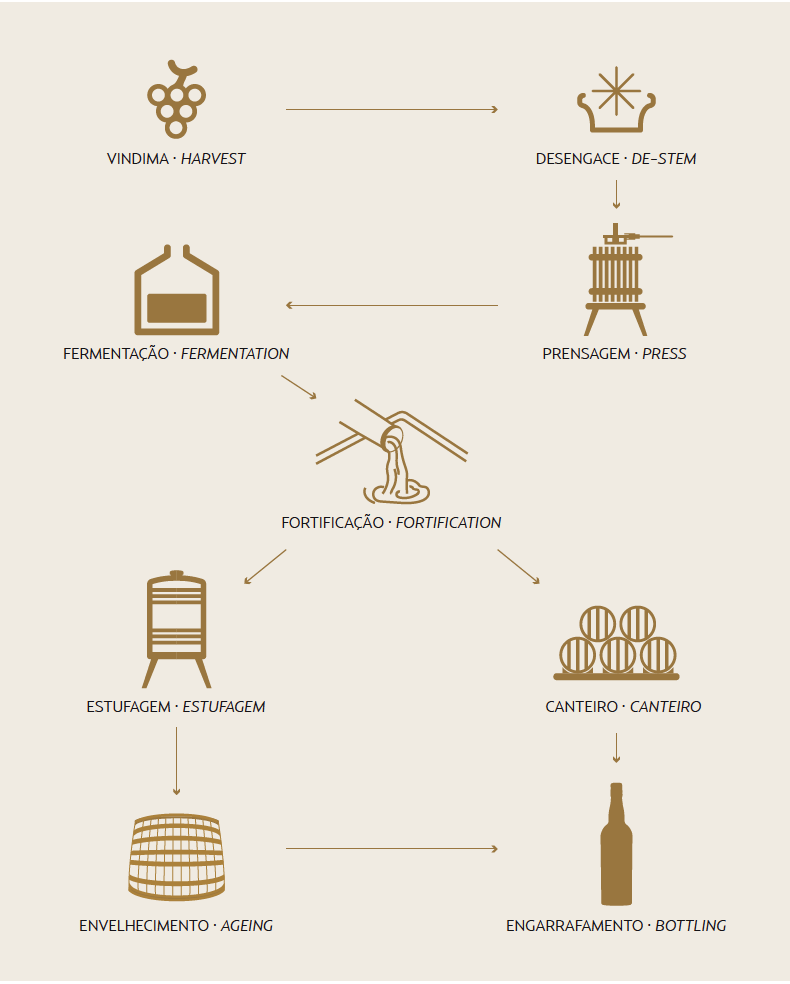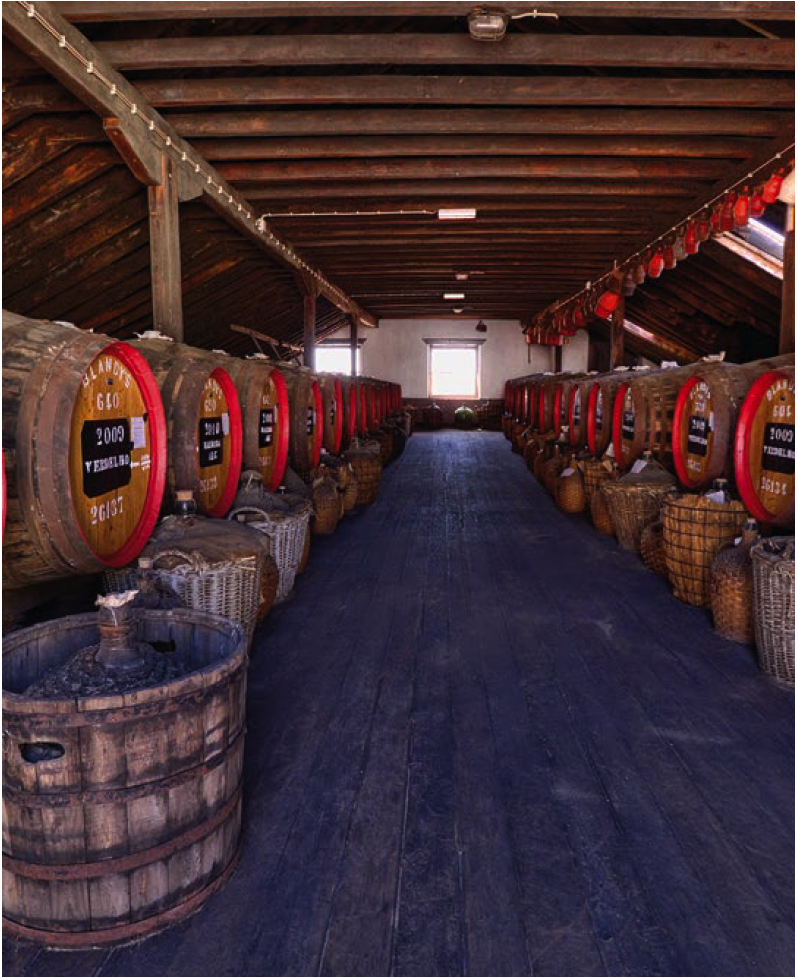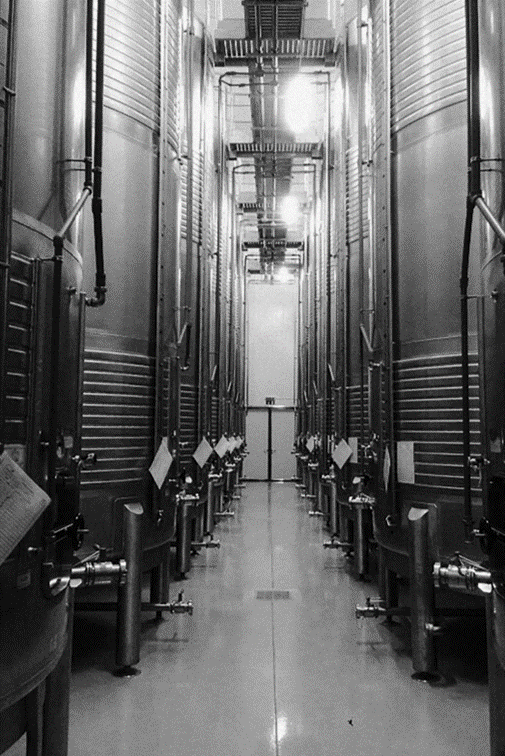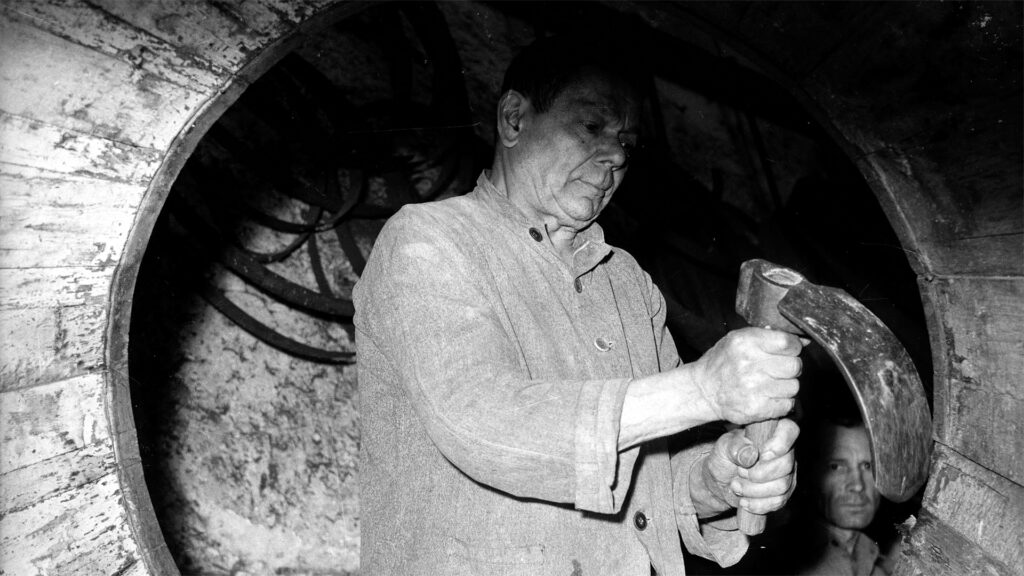All white varietals are subject to pelicular maceration in order to gain the maximum dry extract from the grapes.
Tinta Negra Wines used to produce dry and medium dry wines aren’t subject to maceration, whilst medium rich and rich wines use maceration and auto-vinification techniques.

Winemaking
BLANDY'S PROCESSES AND METHODS
Different vinification methods are used, according to the different grape varieties.
Fortification & Fermentation
Madeira became fortified over time. Fortification of the wine with brandy was introduced in the mid-18th century and today, the process continues with neutral alcohol at 96% strength. Today, all wines have in between 17,5% and 21% alcohol strength.
Fermentation takes place in temperature controlled stainless steel tanks that are closely monitored and is stopped with the addition of natural grape spirit (96%) when the appropriate amount of natural grape sugar has been converted into natural alcohol.
The rich-style wines are fortified after approximately 24 hours whilst the drier style wines are left to ferment for 7 days before fortification.
AGEING
The heating of the wine during the ageing process is unique to Madeira and contributes much to the magic of the wine
The heating of the wine during the ageing process is unique to Madeira and contributes much to the magic of the wine. It came about during the era of discovery when barrels of wine were loaded on board the visiting ships to provide much needed refreshments to the sailors and to also act as ballast for ships. On one particular occasion, a barrel of wine was returned back untouched to a shipper after a long tour to India. After tasting the wine, the shipper noticed that it had improved remarkably in barrel.
This improvement was attributed to the fact that as the ship had passed the equator four times, the wine was naturally heated by the high tropical temperatures. For many years, the practice of shipping wines on a round trip became normal, and gave birth to the “vinho da roda” (round trip wines). With time, the practice of shipping barrels on a round trip became costly, and following the introduction of steamships, the journey became much faster and producers started using the “canteiro system”.
Madeira wine can be aged in the “Canteiro” or the “Estufagem” methods. The “canteiro” method (in American oak casks in the warm attics of the lodge) is used for wines of a superior quality. The “estufagem” method is a process where the winemaker controls the heating temperature during the ageing process.

CANTEIRO
The ``canteiro`` method is used for wines of a superior quality
The word “canteiro” derives from the name of the traditional supporting beams on which the American oak casks are placed. This unique process consists in the ageing of the wines in seasoned oak casks for a minimum period of four years. The casks are stored in lofts in Funchal where the natural warmth of the sun gently heats the wine. The casks are never 100% full, which allows the wine to slowly oxidize and to transform the primary aromas into tertiary aromas or the classical “Madeira Bouquet” of spices, roasted nuts, dried fruits smoke, amongst many others. On average, the company loses 7% of volume of wine per year through evaporation and it is the winemaker’s decision when to transfer the wine from the hottest attic floors to the lower cooler floors that ensures that this loss of volume is controlled. This natural heating over time also leads to the progressive concentration of the wine. Wines produced in the “canteiro” system are stored in casks by the variety name and vintage year.


ESTUFAGEM
The ``estufagem`` method is a process where the winemaker controls the heating temperature during the ageing process
The process known as “estufagem” was introduced by a local doctor Pantelião Fernandes in 1794 as a consequence of increasing market demand. Today, the fortified wines are transferred to large tanks called “estufas” and gently warmed up to temperatures of 45°C during a period of four months using a system of hot water jackets wrapped around the tanks. After the gradual cooling of the wine in the 4th month, the wines are then left to age for two years in Brazilian satinwood vats. This process is only used with the Tinta Negra grape in the production of three year old wines.
COOPERAGE
Some types of wood enhance the organoleptic characteristics of the wine

Blandy’s Madeira mainly use American oak, Brazilian satinwood and Chestnut. These types of wood are divided in four groups of barrels:
“Pipas” – capacity 650 litres/171gl
“Toneis” – capacity 700 litres/ 154 gl
“Cubas” – vertical vats
“Barris” – capacity 100 litres/22 gl

